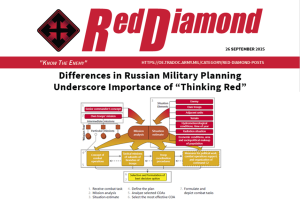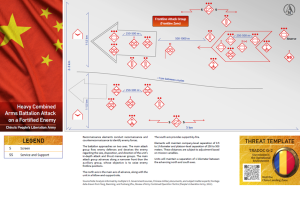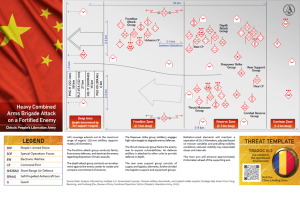How Russia Fights in Large-Scale Combat Operations
By T2COM G2
Distribution A: Approved for public release
File Size:
9.95 MB
File Type:
Page Count:
40
Share & Get The Message Out
The How Russia Fights in Large-Scale Combat Operations assessment provides a comprehensive overview of Russia’s military strategy, operational concepts, and anticipated employment of ground forces in a major theater conflict, particularly with NATO. It draws on historical precedent, lessons from the Ukraine war, and recent doctrinal developments.
Key Insights:
- Perceived Threat: Russia views NATO expansion and U.S. influence as existential threats, shaping its military strategy focused on strategic depth and territorial defense.
- Modernized Approach: While rooted in Soviet-era operational art (mass, deception, attrition), Russia integrates modern capabilities like drones, precision fires, electronic warfare, and cyber operations.
- Ground Forces Are Central: Combined-arms armies, supported by artillery and air defense, are key to both positional defense (attrition) and rapid offensives.
- Future Force Development: The Russian Ground Forces will likely emphasize division-based maneuver, massed fires, upgraded artillery, and integration of new technologies, while continuing to rely on conscription.
- Potential Scenarios: Russia may launch surprise offensives or adopt a defensive posture utilizing terrain and attrition to slow adversaries.
- Preparation for Conflict: The U.S. Army must prepare for a battlespace characterized by contested electromagnetic environments, intense artillery duels, and a resilient adversary with a growing defense-industrial base.
Understanding Russia’s evolving approach to Large-Scale Combat Operations (LSCO) is crucial for U.S. Army training, education, and deterrence efforts in the European theater. This analysis reinforces the importance of preparing for a complex operational environment and the vital role of Russia’s Ground Forces in protecting its periphery.
This is the second in a series building on the work presented in T2COM Pamphlet 525-92, The Operational Environment 2024-2034: Large-Scale Combat Operations. This series of papers focuses on our key potential adversaries—China, Russia, Iran, and North Korea—and how they fight at the operational level of warfare.
Related Products
FY 2025 Operational Environment Running Estimate
T2COM OE Threat Assessment 1-1, How China Fights in Large-Scale Combat Operations
Exploiter Series: Sociocultural Exploitation of Bangladesh
Differences in Russian Military Planning Underscore Importance of “Thinking Red”
China’s People’s Liberation Army Heavy Infantry Company Attack on a Fortified Enemy Threat Template
North Korea’s Ukraine War Involvement Signals Escalating Cooperation Among U.S. Adversaries
China’s People’s Liberation Army Heavy Combined Arms Brigade Attack on a Fortified Enemy Threat













